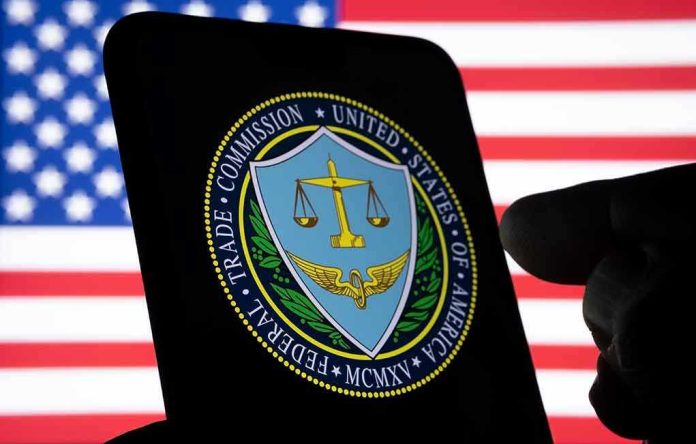
The Eighth Circuit just slammed the brakes on the FTC’s “Click-to-Cancel” rule, tossing another shovel of dirt onto the grave of regulatory overreach and leaving Americans to wonder how much longer we’ll have to endure bureaucrats playing fast and loose with the law.
At a Glance
- Federal appeals court vacated the FTC’s “Click-to-Cancel” rule, citing procedural violations.
- The rule—meant to make canceling subscriptions easier—will not take effect as scheduled on July 14, 2025.
- Businesses avoid costly new compliance burdens, but consumers lose out on promised protections.
- The decision is a sharp rebuke of regulatory shortcuts and signals potential hurdles for future rulemaking.
Court Tosses Out FTC’s “Click-to-Cancel” Rule on Technicality
The U.S. Court of Appeals for the Eighth Circuit delivered what can only be described as a constitutional gut-check to the Federal Trade Commission, vacating its much-hyped “Click-to-Cancel” rule on July 8, 2025. The rule, which was supposed to force businesses to make it as easy to cancel a subscription as it is to sign up, got the axe not because the court approved of shady marketing, but because the FTC failed to follow basic legal procedures. The agency didn’t bother to conduct a preliminary regulatory analysis, even after an administrative law judge found compliance costs would skyrocket past $100 million annually. That’s not pocket change, even for Washington’s spend-happy standards. So, the rule is dead in the water, at least for now.
The FTC’s maneuver was supposed to be a shining example of “consumer protection.” Instead, it’s become a case study in government arrogance and incompetence, with the Eighth Circuit making it clear that the agency can’t just skip steps and expect the courts to rubber-stamp its agenda. For everyone keeping score, this is what happens when unelected regulators try to bulldoze through the law in pursuit of their latest progressive cause.
How We Got Here: Bureaucratic Overreach Meets Judicial Reality
The “Click-to-Cancel” rule was born out of the FTC’s war on so-called “negative option” marketing—those subscription traps where silence equals consent. The agency claimed it was just modernizing old rules to save Americans from the horror of a gym membership that won’t die. But the real story is that this was a power grab, pure and simple. The FTC tried to jam through a new mandate without bothering to check the price tag, estimating compliance would cost less than $100 million a year. When the numbers inevitably ballooned, the agency shrugged and pushed ahead anyway, skipping the legally required economic analysis. Cue a chorus of lawsuits from industry groups, who rightly saw this as both an operational nightmare and a regulatory overstep. The courts finally stepped in and, in a rare act of government sanity, sided with the rule of law over the rule of bureaucrats.
The result? The rule, originally set to kick in on July 14, 2025, is now history. The landscape reverts back to the patchwork of state laws and older, less aggressive FTC rules. Businesses breathe a sigh of relief, and the agency is left licking its wounds and plotting its next move.
Winners, Losers, and the Road Ahead
For businesses—especially those running on subscription models—this decision is a stay of execution. They avoid a massive compliance bill, at least for the time being, and sidestep yet another layer of federal micromanagement. Consumers, meanwhile, don’t get the streamlined cancellation promised by the rule, but let’s be honest: anyone who’s struggled to cancel a magazine subscription knows that government “fixes” usually come with more red tape, not less. The real win here is for anyone tired of regulators using “consumer protection” as a pretext for ever-expanding control.
The FTC’s authority has taken a visible hit. The court’s message was clear: if you want to change the rules, do your homework. Don’t ignore statutory requirements and expect to get away with it. Legal analysts are calling this a textbook example of how the courts can and should check administrative power, especially when agencies get sloppy or arrogant. Consumer advocates are already howling about the decision putting Americans at the mercy of greedy corporations, but business groups are celebrating a rare victory for due process and common sense. The longer-term picture? The FTC may come back with a new proposal—this time, hopefully with the required analysis. Or Congress could step in, though that’s unlikely given the current climate of gridlock and fiscal recklessness.
The Unanswered Questions and Political Fallout
While the immediate impact is clear—no new rule, no new compliance headaches, no new “protections”—the broader implications are just starting to play out. Will the FTC learn its lesson and follow the law next time, or will it double down on pushing boundaries? Will Congress finally rein in runaway regulatory agencies, or will it keep passing the buck? And most importantly, how many more times will Americans have to watch unelected bureaucrats try to rewrite the rules of commerce without regard for cost, process, or, frankly, common sense?
The court’s ruling is a wake-up call for anyone who still believes in constitutional checks and balances. When regulators overreach, it’s up to the courts—and ultimately, the people—to remind them that their power is not unlimited. That, at least, is a victory worth celebrating in an era when those in charge seem determined to erode every last safeguard standing between citizens and the administrative state.













